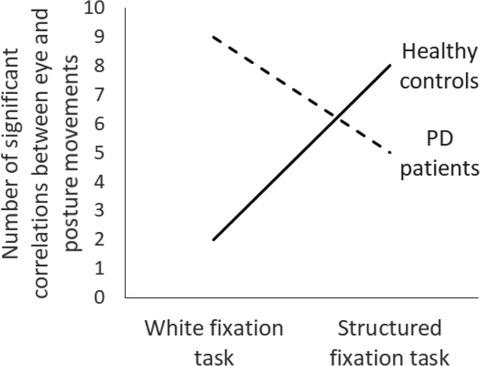当前位置:
X-MOL 学术
›
Eur. J. Nerosci.
›
论文详情
Our official English website, www.x-mol.net, welcomes your feedback! (Note: you will need to create a separate account there.)
New insight into Parkinson's disease-related impairment of the automatic control of upright stance.
European Journal of Neroscience ( IF 3.4 ) Pub Date : 2020-06-19 , DOI: 10.1111/ejn.14870 Cédrick T Bonnet 1 , Arnaud Delval 2 , Tarkeshwar Singh 3 , Yann-Romain Kechabia 1 , Luc Defebvre 4
European Journal of Neroscience ( IF 3.4 ) Pub Date : 2020-06-19 , DOI: 10.1111/ejn.14870 Cédrick T Bonnet 1 , Arnaud Delval 2 , Tarkeshwar Singh 3 , Yann-Romain Kechabia 1 , Luc Defebvre 4
Affiliation

|
Parkinson's disease (PD) affects the automatic control of body movements. In our study, we tested PD‐related impairments in automatic postural control in quiet upright stance. Twenty PD patients (mean age: 60 ± 8 years; Hoehn and Yahr: 2.00 ± 0.32, on‐drug) and twenty age‐matched controls (61 ± 7 years) were recruited. We studied interrelations between center‐of‐pressure movements, body movements (head, neck, and lower back), eye movements and variability of pupil size. Participants performed two fixation tasks while standing, during which they looked at: (a) a cross surrounded by a white background; and (b) a cross surrounded by a structured visual background (images used: rooms in houses). PD patients exhibited stronger and weaker correlations between eye and center‐of‐pressure/body movement variables than age‐matched controls in the white and structured fixation tasks, respectively. Partial correlations, controlling for variability of pupil size showed that PD patients used lower and greater attentional resources than age‐matched controls to control their eye and center‐of‐pressure/body movements simultaneously in the white fixation and structured fixation tasks, respectively. In the white fixation task, PD patients used attentional resources to optimize visuomotor coupling between eye and body movements to control their posture. In the structured fixation task, the salient visual stimuli distracted PD patients’ attention and that possibly affected postural control by deteriorating the automatic visuomotor coupling. In contrast, age‐matched controls were able to use surrounding visual background to improve the automatic coupling between eye and center‐of‐pressure movements to control their posture. These results suggest that cluttered environments may distract PD patients and deteriorate their postural control.
中文翻译:

对帕金森氏病相关疾病的直立姿势自动控制的新见解。
帕金森氏病(PD)影响身体运动的自动控制。在我们的研究中,我们以安静的直立姿势测试了自动姿势控制中与PD相关的损伤。招募了20名PD患者(平均年龄:60±8岁; Hoehn和Yahr:2.00±0.32,使用药物)和20名年龄匹配的对照组(61±7岁)。我们研究了压力中心运动,身体运动(头部,颈部和下背部),眼睛运动和瞳孔大小变化之间的相互关系。参与者站立时执行了两个固定任务,在此期间,他们进行了观察:(a)被白色背景包围的十字架;(b)被结构化视觉背景包围的十字架(使用的图像:房屋中的房间)。与年龄匹配的白人和结构化固定任务相比,PD患者的眼部和压力中心/身体运动变量之间的相关性强弱。偏相关性控制瞳孔大小的变化表明,与年龄匹配的对照组相比,PD患者在进行白色固定和结构固定的固定任务时,分别使用了更低和更多的注意力资源来同时控制其眼睛和压力中心/身体的运动。在白色固定任务中,PD患者使用注意力资源来优化眼睛和身体运动之间的视觉运动耦合,以控制其姿势。在结构化固定任务中,明显的视觉刺激分散了PD患者的注意力,并可能通过使自动视觉运动耦合恶化而影响姿势控制。相反,年龄匹配的控件能够利用周围的视觉背景来改善眼睛和压力中心运动之间的自动耦合,以控制其姿势。这些结果表明,混乱的环境可能分散PD患者的注意力并恶化其姿势控制能力。
更新日期:2020-06-19
中文翻译:

对帕金森氏病相关疾病的直立姿势自动控制的新见解。
帕金森氏病(PD)影响身体运动的自动控制。在我们的研究中,我们以安静的直立姿势测试了自动姿势控制中与PD相关的损伤。招募了20名PD患者(平均年龄:60±8岁; Hoehn和Yahr:2.00±0.32,使用药物)和20名年龄匹配的对照组(61±7岁)。我们研究了压力中心运动,身体运动(头部,颈部和下背部),眼睛运动和瞳孔大小变化之间的相互关系。参与者站立时执行了两个固定任务,在此期间,他们进行了观察:(a)被白色背景包围的十字架;(b)被结构化视觉背景包围的十字架(使用的图像:房屋中的房间)。与年龄匹配的白人和结构化固定任务相比,PD患者的眼部和压力中心/身体运动变量之间的相关性强弱。偏相关性控制瞳孔大小的变化表明,与年龄匹配的对照组相比,PD患者在进行白色固定和结构固定的固定任务时,分别使用了更低和更多的注意力资源来同时控制其眼睛和压力中心/身体的运动。在白色固定任务中,PD患者使用注意力资源来优化眼睛和身体运动之间的视觉运动耦合,以控制其姿势。在结构化固定任务中,明显的视觉刺激分散了PD患者的注意力,并可能通过使自动视觉运动耦合恶化而影响姿势控制。相反,年龄匹配的控件能够利用周围的视觉背景来改善眼睛和压力中心运动之间的自动耦合,以控制其姿势。这些结果表明,混乱的环境可能分散PD患者的注意力并恶化其姿势控制能力。



























 京公网安备 11010802027423号
京公网安备 11010802027423号